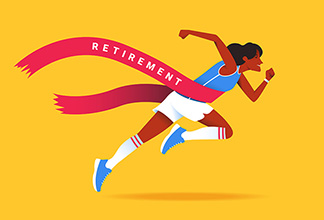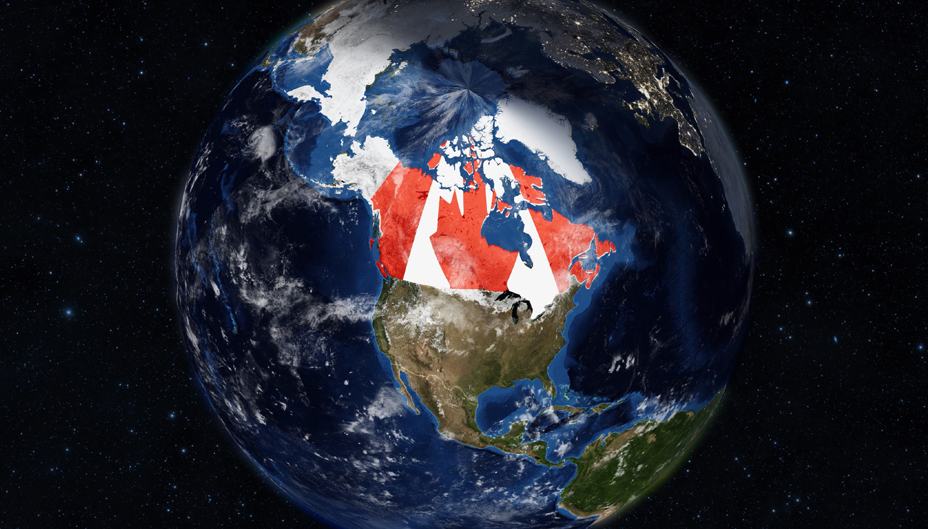O Canada: Does Your Portfolio Show ‘Home Bias’?
Written by The Inspired Investor Team
Published on June 13, 2024
minute read
Share:
There’s a lot about Canada to celebrate, especially when it comes to our finances and markets. Our financial system is one of the safest and strongest in the world. Canada is renowned for its stable, reliable and efficient financial system. According to the IMD World Competitiveness Centre, Canada ranks second in the G7 on the competitiveness of its financial system.
Canada is an attractive place to invest, but it doesn’t have to represent the entirety of your portfolio. Our country only makes up about 3 per cent of the global equity market, just a small slice of the pie. Despite this, most Canadians invest more than half of the investments domestically1.
This challenge isn’t unique to Canada – investors around the world have what’s called home bias, where most of their assets are invested in local stocks. For instance, a 2020 survey2 by the Australian Securities Exchange found that 60 per cent of Australians owned domestic shares directly, while only 15 per cent owned international equities.
Although Canada has a lot to offer investors, investing abroad offers additional diversification benefits and opportunities you can’t find at home, says Kee-Hong Bae, a professor of finance and Bob Finlayson Chair in International Finance at York University’s Schulich School of Business.
One reason why, he notes, is that if you only invest domestically, you’ll be overexposed to financial, energy and industrial companies, as these three sectors alone make up almost two-thirds of Canada’s market. “If your bias is toward your home market then you’re giving up the diversification benefit,” he explains. “Here, where we’re not as diversified, it makes a lot of sense to look abroad.”
Breaking down the bias
There are plenty of reasons why home bias exists, even if investors know that allocating too much to one country can introduce “concentration risk.” For starters, people tend to invest in what they know. We hear about brand-name Canadian companies from our television ads, we get information about these businesses from the news we consume, we all know people who work at various publicly listed companies and so on.
“You tend to invest in stocks you are more familiar with,” Bae says. “It has nothing to do with information about a company, it’s just that you’re more familiar with Canadian stuff, so you invest in Canadian stocks.”
But there’s another reason why Canadians tend to shop local for their investments: If you buy stocks in other countries, you usually have to purchase them in that nation’s currency, which can introduce foreign currency exchange risk into your portfolio. As RBC Global Asset Management3 puts it: “A declining Canadian dollar versus foreign currencies can add to the returns of mutual funds and ETFs that invest in foreign markets, while a rising Canadian dollar can negatively impact returns on foreign investments.”
For example, “the U.S. stocks you own are at risk of price fluctuations, but foreign exchange rates change all the time, too,” Bae says. “So, you’re taking on an added risk.”
A world of opportunity
Shedding that home bias can be challenging, but it may be worth the effort. The U.S. is home to the biggest and broadest market in the world, with many big-name companies and brands you already know. Avoiding or limiting your exposure to this market could mean missing out on opportunities that you just won’t get if you only invest in Canada.
For instance, if you want to own the big technology names that have driven markets higher over the last few years, you have to look south. While the technology sector makes up 8.3 per cent of our market, it accounts for 29.2 per cent of the S&P 500. “There’s a lot to buy outside of Canada,” Bae says. “We don’t have a lot of tech companies here so if you don’t go abroad then you’re giving up opportunities.”
It’s a similar story in other sectors, such as healthcare, which accounts for 0.3 per cent of the market here, but 12.3 per cent of the U.S. market.
There’s no magic allocation percentage an investor should have to Canada. How much you might own will depend on several factors, including your financial goals, time horizon and risk-tolerance levels. You may even want to factor in where you work. For instance, if you work for a large oil and gas company, it could make sense for you to think twice about owning only energy stocks to avoid linking too much of your total financial security to one industry.
What’s most important is that you recognize your potential home bias and consider diversifying, whether that’s in terms of geography, industries or individual companies. As Bae puts it, the whole idea of diversification is that you might decrease risk without necessarily giving up return and that can be a good thing to help you reach your financial goals.
1Source: Financial Post, "Why solving home bias in investing is more complicated than it sounds", August 2023
2Source: ASX Australian Investor Study 2020
3Source: RBC Global Asset Management, "How to manage currency risk in a portfolio"
RBC Direct Investing Inc. and Royal Bank of Canada are separate corporate entities which are affiliated. RBC Direct Investing Inc. is a wholly owned subsidiary of Royal Bank of Canada and is a Member of the Canadian Investment Regulatory Organization and the Canadian Investor Protection Fund. Royal Bank of Canada and certain of its issuers are related to RBC Direct Investing Inc. RBC Direct Investing Inc. does not provide investment advice or recommendations regarding the purchase or sale of any securities. Investors are responsible for their own investment decisions. RBC Direct Investing is a business name used by RBC Direct Investing Inc. ® / ™ Trademark(s) of Royal Bank of Canada. RBC and Royal Bank are registered trademarks of Royal Bank of Canada. Used under licence.
© Royal Bank of Canada 2025.
Any information, opinions or views provided in this document, including hyperlinks to the RBC Direct Investing Inc. website or the websites of its affiliates or third parties, are for your general information only, and are not intended to provide legal, investment, financial, accounting, tax or other professional advice. While information presented is believed to be factual and current, its accuracy is not guaranteed and it should not be regarded as a complete analysis of the subjects discussed. All expressions of opinion reflect the judgment of the author(s) as of the date of publication and are subject to change. No endorsement of any third parties or their advice, opinions, information, products or services is expressly given or implied by RBC Direct Investing Inc. or its affiliates. You should consult with your advisor before taking any action based upon the information contained in this document.
Furthermore, the products, services and securities referred to in this publication are only available in Canada and other jurisdictions where they may be legally offered for sale. Information available on the RBC Direct Investing website is intended for access by residents of Canada only, and should not be accessed from any jurisdiction outside Canada.
Explore More

Should I Invest or Pay Down My Mortgage?
Consider these four questions
minute read

As Many Head Back to the Office, Where Could Investors See Changes?
How returning to in-person work could affect a range of investments
minute read

Considering the FIRE Lifestyle? Here’s What Your Investments Might Look Like
We asked three people how they created financial independence and retired early
minute read
Inspired Investor brings you personal stories, timely information and expert insights to empower your investment decisions. Visit About Us to find out more.







